Upgrade your Heating Grid
with our powerful Digital Twin
By enabling you to optimise, decarbonise and transform your Heating system, we help you to take on the climate challenge and progress.
With our real-time Digital Twin Platform, we create a digital copy of your complete grid that runs in real-time. This comprehensive software solution lets you optimise your grid and run simulations of future situations. So you can improve performance, reduce CO2 emissions, save on operating costs and make smarter business decisions.
